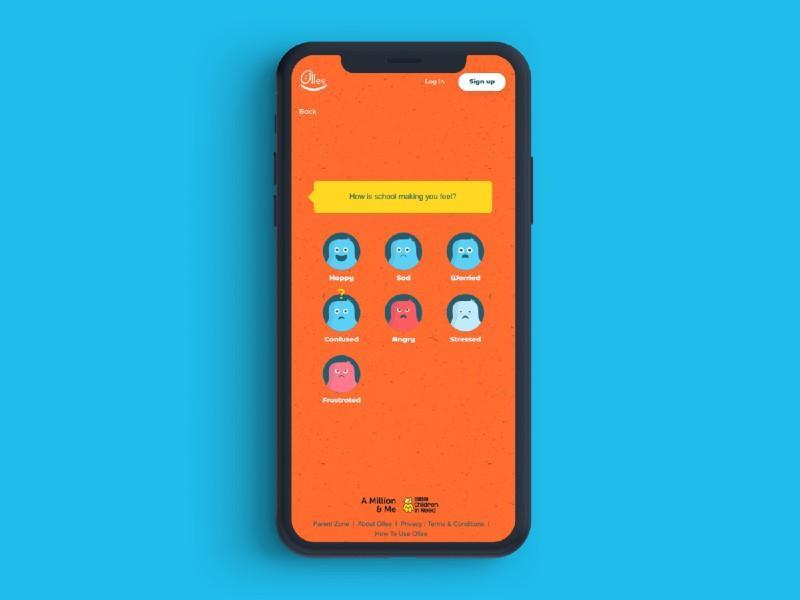Screen time and wellbeing
When your child has a new smartphone, tablet or games console, they will no doubt be enormously excited to get it set up – but perhaps less keen to put it down.
It can be difficult to find the right balance, especially if their new device or console is their primary way of connecting with friends. It's important to set boundaries on when using tech is OK, and when it might be better to do something else.
While age-appropriate settings and parental controls can help ensure they’re having a safe experience, it’s also important to help your child enjoy their new tech responsibly by striking a balance between online and offline activities.
Screen use vs screen time
Getting new tech can lead to a period of bumper screen time for everyone. Whilst this can be fun, it can also cause us to spend more time than we might like using new devices.
It’s important to remember that not all screen time is equal. Try to see your child’s time spent online in terms of screen use, rather than screen time: consider what they are doing, rather than just how long they spend doing it.
The internet can offer important opportunities for social interaction, creativity, education and most importantly, play. Time spent playing games, watching videos or chatting with friends is definitely not a waste of time.
Similarly, there’s nothing wrong with having an occasional movie marathon or gaming day – so long as it doesn't become the new normal.
There are, of course, limits. As valuable as time online can be, downtime offline is important too. It's important to think about what these are for your family – and what is healthy for your child’s wellbeing. It might mean encouraging them to take regular breaks (and many devices and gaming consoles offer tools for reminders), making sure screen use isn’t affecting a good night’s sleep or leading to them skipping meals.
If this is the case, the device could be negatively impacting their wellbeing – making a conversation around responsible use of tech even more important.
Setting clear, consistent boundaries helps children know what to expect. Discuss the boundaries you are setting – for example appropriate time limits, or places they can and can’t use their devices, like in the bathroom or at the dinner table. Make sure they understand what your agreed boundaries are and why, rather than imposing rules heavy-handedly.
You may decide to have different rules for school holidays and weekends, or have the same, consistent rules as you do during term time. Whatever you decide, be clear on what will change and when – for example, screen time phasing down to a lower level in time for school to restart.
Importantly, be a digital role model and stick to some rules too. If you’ve asked them not to use their phone at the dinner table, then that means you don’t either. Demonstrating your own healthy relationship with tech will help them develop self-moderation and understand when they need to switch off.
Be engaged and respectful
Even when you have boundaries, there will be moments when your child is engrossed in play or chat while you need them to be doing something else. Try and avoid knee-jerk reactions – such as simply telling your child to “turn it off”. It’s easy to do when trying to get out of the house or preparing dinner – but try to give them advanced warning when they need to put down a device.
Forewarnings for cut-off times offer them the chance to finish a game, episode or chat. (Remember: you’d certainly feel frustrated if someone pulled the plug halfway through your favourite TV show.)
Connect together
Encourage them to talk to you about what they enjoy doing and how they are using their new device.
This doesn’t mean overstepping their privacy and asking for logins and passwords or showing you everything they are doing online. But demonstrate an active interest. You could spend some time playing their favourite game together, or ask them about their favourite YouTubers or influencers, and the videos or streams they most enjoy.
Resist the urge to hover – exploring online independently will help build digital resilience – but check in regularly to get a sense of how they are getting on and who and what they are engaging with.
Listen to Parent Zone's podcast, Tech Shock.
It's not always easy to spot when a child is feeling low or anxious. But if your child seems unusually irritable, withdrawn or is missing sleep or meals, these could be signs of something more serious.
It's important to keep an eye on changes in your child's behaviour, and to offer them a safe and supportive space to come to you if they feel that something is wrong.
Ollee could help. Ollee is a virtual friend for children aged 8-11, designed to help them start a conversation about how they are feeling. It can be accessed via a web browser or downloaded for free as an app, and has simple prompts and pathways for children to follow for advice and support. Parents can also use Ollee to get tailored advice, which they can share with their child to help them open up.
If you need further support, there are plenty of expert organisations in our help hub, here.
Spot something that doesn't look quite right? You can email librarian@parentzone.org.uk to submit comments and feedback.
This article was last updated on 23/09/22.




 Previous Article
Previous Article 